
NY Coastlines—New York Sea Grant (NYSG)'s flagship publication—and its news archive, Currents, highlight news, events and other activities from our coastal program's various research, extension and education endeavors throughout New York's marine and Great Lakes waters.
Early Summer 2019
NY Coastlines / Currents; Vol. 47, No. 2 & 3 / Vol. 7, No. 2 & 3
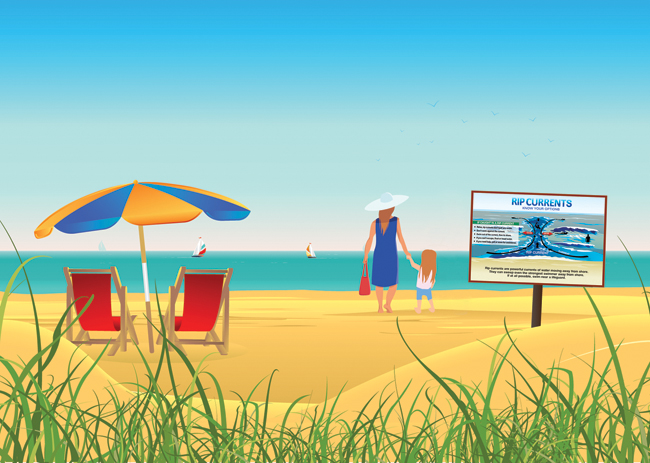
Spotlight: Becky Shuford Named NYSG Director
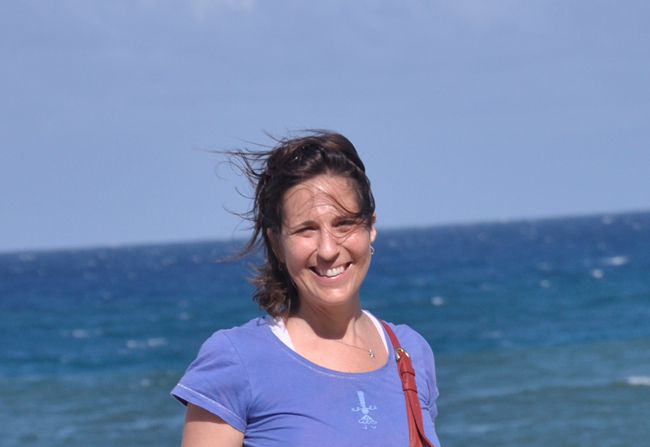
The New York Sea Grant (NYSG) Board of Governors and Stony Brook University Provost Michael Bernstein are pleased to announce the appointment of Rebecca L. Shuford, Ph.D., as Director of the NYSG Institute. Becky began as the new director on Monday, June 17th.
Becky is a New York native, originally from Brooklyn, and has a life-long history with and love for NY's coastal ecosystems and communities.
She is thrilled to be joining NYSG and to be returning "home" to work with partners across the State and within each of NY's coastal ecosystems, including the Great Lakes, Hudson River Estuary, Long Island Sound and Atlantic Ocean. Read on >>
In the spotlight for this issue of NY Coastlines ...
New Lake Ontario inundation mapping tools;
Coastal resilience research and new forums are helping communities and residents better prepare for severe storms; Also examined is NOAA's 2019 Atlantic Hurricane Outlook, released in late May;
"Currents Clips," a just-launched social media-focused video series that highlights recent NYSG coastal research, extension & education stories.
What's Trending: Lake Ontario Inundation Mapping Tools Now Available
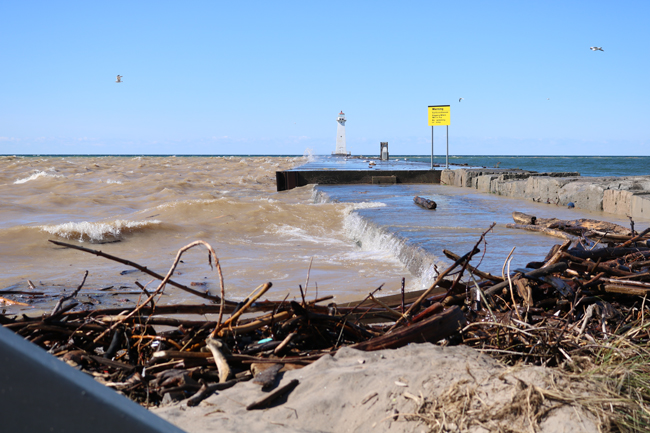
New interactive mapping tools are helping property owners and communities along Lake Ontario and its embayments enhance flooding preparedness by allowing them to visualize inundation information for individual parcels of interest using predetermined water levels. Read on >>
What's Trending: Helping Coastal Residents Better Prepare for Storms
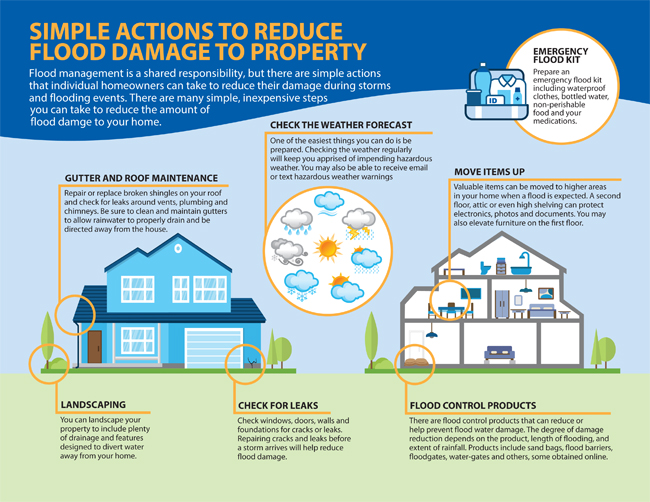
In the years following Superstorm Sandy's impact on the tri-state area, the aim of the National Oceanic and Atmospheric Administration (NOAA) / Sea Grant Coastal Storm Awareness Program (CSAP) was to help better understand through social science how people react to storm warnings and make the decision to stay or to go.
"The CSAP has brought to the forefront the importance of understanding not only forecast technology, but the recipients of that technology ---the very people who will receive information and need to act," said CSAP-funded investigator Rachel Hogan Carr of the Nurture Nature Center in Easton, Pennsylvania.
"Through social science studies of how people understand risk, and what approaches will most help to motivate them to take protective actions, CSAP adds tremendous value to the suite of technological forecast capabilities already in place, maximizing their impact." Read on >>
Coastal Resilience Forums
Being resilient before a coastal storm is key, which is why NYSG has hosted several forums and has produced a new fact sheet series that starts with Simple Actions to Reduce Flood Damage to Property and continues with Options to Reduce Flood Risk to Your Home. There are also two companion one-pagers with resources for homeowners and municipalities. Read on >>
Atlantic Hurricane Outlook
With the 2019 hurricane season upon us, NOAA and Sea Grant are leveraging cutting-edge tools to help secure Americans against the threat posed by hurricanes and tropical cyclones across both the Atlantic and Pacific Oceans. The season, which officially extends through Nov 30, is predicted by NOAA's Climate Prediction Center to be near-normal in the Atlantic. Read on >>
What's Trending: On YouTube: NYSG Launches "Currents Clips" Video Series
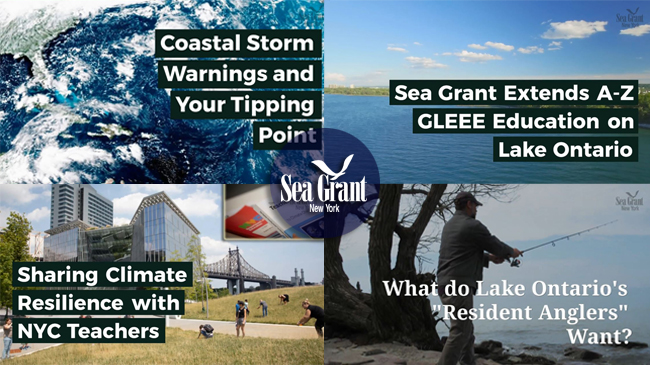
"Currents Clips" is a new series of one to two minute video summaries that immerse NYSG's Web site visitors, social media followers and NY Coastlines subscribers into the program's coastal research, extension and education stories.
Experience the first wave at nyseagrant.org/currentsclips.
#Research
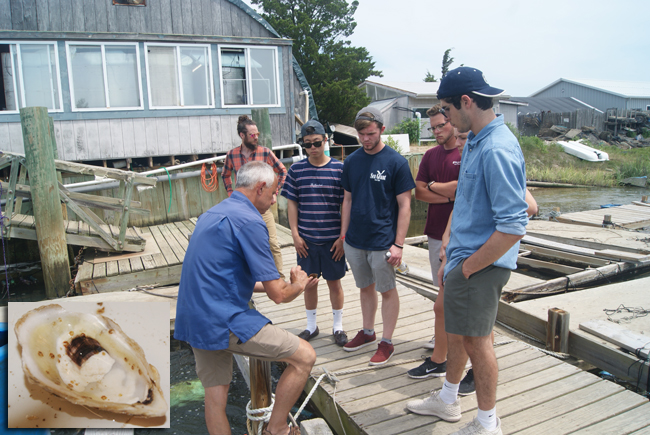
When Cultivating Oysters, Would High-Tech Food Help?
Investigators of a NYSG-funded study examined the development of small, local shellfish hatcheries and increasing hatchery production methods for existing hatcheries culturing the eastern oyster, Crassostrea virginica. Read on >>
More NYSG #Research news ...
LIS Research Conference
NYSG hosted this 2019 Long Island Sound-focued event, which served as a chance for over 100 marine researchers to cross their usual boundaries of interests and learn about science happening in a wide array of subjects and disciplines. Read on >>
Classifying Coastal Habitats
In a recent article published in PLoS ONE by NYSG-funded investigators, the authors ask how well marine scientists, statistically, describe reality. If samples are drawn from very geographically distant locations, what do they tell us? Read on >>
#Extension
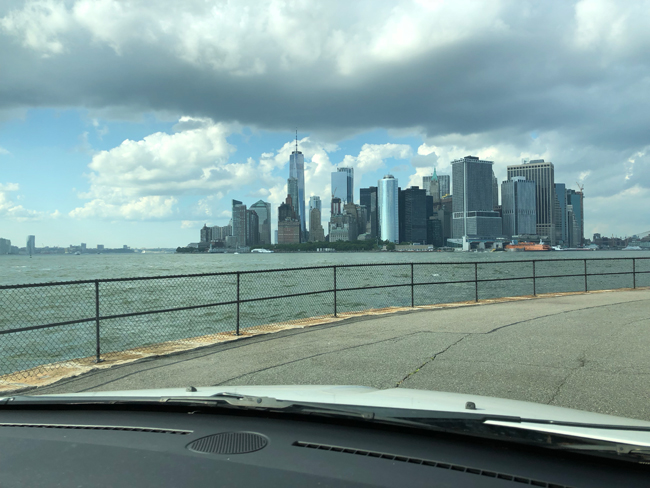
Raising Awareness on Nature-Based Shorelines
A new framework is being developed to monitor and evaluate the performance of nature-based shorelines throughout New York State (NYS).
The effort, led by the Science and Resilience Institute at Jamaica Bay, includes exploring the best ways to evaluate the function of wetlands, natural materials such as beach grass plantings and nature-based features such as living shorelines. It also examines the use of concrete walls, rock revetments, and other man-made structures to provide multiple benefits ---such as social, ecological and physical shoreline stabilization. Read on >>
NYSG's coastal specialists serve as regional stakeholder engagement leads on NOAA and NYS Energy Research & Development Authority-funded nature-based shorelines projects: nyseagrant.org/nyshorelines.
More NYSG #Extension news ...
Clean & Safe Boating
Barbara Wood's dad, the late Robert H. Wood, a WWII veteran and career educator, loved teaching and boating. So, Barbara donated her dad's 1967 Evinrude Playmate runabout for NYSG's award-winning "Discover Clean and Safe Boating" public education campaign. The boat will be featured in an NYSG-organized exhibit for 2019's Great NYS Fair. Read on >>
Lake Sturgeon Restoration
NYSG has receives Disney Conservation Fund support for restoration efforts of lake sturgeon, which were once abundant in NY until overharvest, dam construction and habitat degradation began impacting their numbers in the mid-1800s. By 1976, the fishery closed and, in 1983, lake sturgeon were designated a NYS Threatened Species. Read on >>
NYSG Extension: Publications ...
Localized Green Infrastructure (GI) Guide Wins Award, GI Champions Workshop Held
The American Society of Landscape Architects has awarded a Merit Award of Achievement for Research and Communication to the Green Infrastructure Retrofit Manual for the City of Rochester and Monroe County, a 189-page, how-to guide and 109-page appendices resource.
Green infrastructure (GI) is a design strategy that applies a natural systems approach to managing stormwater and creating healthier, more sustainable environments. Adding natural elements to developed areas can help reduce nuisance flooding and enhance property values. Read on >>
And for more on the illustrated manual—which includes information on the pollutant removal efficiencies of GI practices, a cost calculator, soil testing protocols, recommended plants and case studies—see NYSG's recent impact statement. Read on >>
GL Shoreline Erosion Guide
Readers of this Great Lakes guide will learn about managing shoreline properties for better drainage and bluff stabilization, nature-based erosion management features such as coir logs and sills, and traditional hard or gray structures. Read on >>
Cisco Restoration Report
International, collaborative efforts to increase native Cisco populations in Lake Ontario will support a more diverse forage base for predators including salmon and trout that draw significant numbers of anglers to the lake. Read on >>
GL-Wide Fish ID Guide
The full-color Salmon and Trout of the Great Lakes: A Visual Identification Guide illustrates for anglers the differences among the species. Initially focused only on Lake Ontario, the guide has expanded to all Great Lakes, home to eight species of salmon and trout. The three dozen illustrations in the guide are all anatomically accurate for fish that are often commonly misidentified species. Read on >>
Rip Currents Resources
Rip currents—narrow channels of fast-moving seawater that pull swimmers away from the shore—kill around 100 beachgoers each year according to the U.S. Lifesaving Association. NYSG offers an array of resources at nyseagrant.org/ripcurrents, including a new fact sheet. There are also details on NOAA National Weather Service's real-time surf zone forecasts for beachgoers. Read on >>
#Education

Visualizing Coastal Change ... In and Around NYC
Some of NYSG's mapping efforts, which provide educational resources across the Hudson Valley and Metro New York, are part of the New York Historical Society's Hudson Rising exhibit, which is currently on view in New York City through August 9th. Read on >>
And there's more on the " Visualizing Coastal Change" project, which spans some 500 miles of New York coastal and estuarine environments, including the Hudson Valley, and has helped build cartography skills among more than 200 K-12 educators in the Mid-Hudson and New York metro areas: nyseagrant.org/visualizingcoastalchange.
More NYSG Education news ...
Boating in New York: Safety Tips Before You Go
Every year, NYSG's "Discover Clean and Safe Boating" educational vessel is equipped with all the gear required and recommended for boating on New York waters. But because boating is a year 'round pursuit in New York, we're continually educating people about how to properly select a life vest and when they are legally required to wear it. Read on >>
Aquatic Invasive Species
Videos are now available on NYSG's YouTube channel for the four sessions in our program's 2019 Watercraft Inspection Program Leader educational webinar series. Each video addresses different issues associated with recreational boating as a key pathway in the spread of aquatic invasive species (AIS). Read on >>
On YouTube: AIS Tips
The reason why watercraft inspection—the act of looking for, removing and properly disposing of unwanted aquatic hitchhiking debris—is important is because it helps to prevent the spread of unwanted aquatic invasive species. Read on >>
On YouTube: AIS Myths
"Invasive Species Spread Naturally and Increase Biodiversity" is one of several common watercraft inspection myths dispelled. Another one, "There's Nothing I Can Do to Prevent the Spread of AIS" includes ways you can help. Read on >>
Safety From HABs
We're reminding those who enjoy NY's waters to be informed about harmful algal blooms (HABs), how to avoid exposure of oneself and pets, and where to report potential HABs.
Included are some recent audio and video clips with safety tips. Read on >>

Early Summer 2019
NYSG's Currents News Archives (Vol. 7, No. 2 & 3)
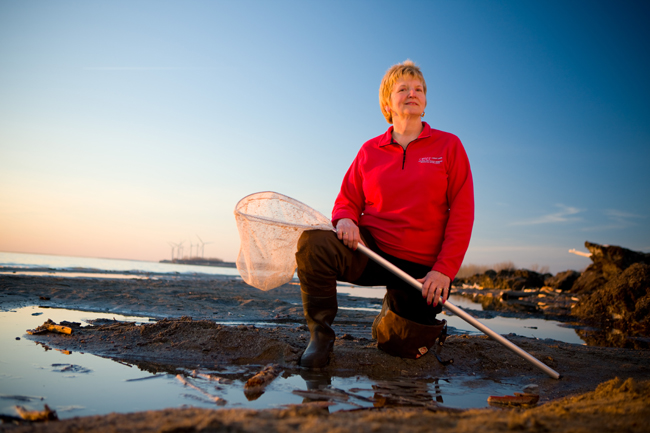
Keep tabs on NYSG's news in between issues of NY Coastlines / Currents via our Web site (www.nyseagrant.org) and blog (www.nyseagrant.org/blog).
Here's a sampling of other stories that have made waves these past few months on our social media platforms (www.facebook.com/nyseagrant, www.twitter.com/nyseagrant) and via our site's News (www.nyseagrant.org/currents) and topic-based News Archives (www.nyseagrant.org/currentsarchive) sections ...
#GreatLakes > Lake Erie
In Media: NYSG's Helen Domske Honored at State of Lake Erie Meeting (April 2019) Read on >>
Also: NYSG Sets Comprehensive Agenda for 2019 State of Lake Erie Meeting (March 2019) Read on >>
On YouTube: Control Plan Set to Target Creepy Parasites Along Lake Erie Tributaries (April 2019) Read on >>
#GreatLakes > Lake Ontario
In Media: Live on Lake Ontario? There's Now a Tool to Help You Plan for Potential Flooding (June 2019) Read on >>
In Media: Great Lakes at Highest Water Levels Ever Recorded for Month of May (June 2019) Read on >>
On Air: High Lake Ontario Water Levels Could be 'New Norm' (May 2019) Read on >>
Lake Ontario Experts Present "Finding Fish on the Move" Symposium (March 2019) Read on >>
#GreatLakes > Recreation
On YouTube: Boating Safety and the Summer Season (June 2019) Read on >>
On YouTube: Life Jackets and the Law (March 2019) Read on >>
In Media: Boaters - Clean, Drain, Dry Helps Slow Aquatic Invasive Species (April 2019) Read on >>
Funded Projects
In Media: Additional Funding Announced for Restore the Gorge Effort (May 2019) Read on >>
In Media: York Biology Professor, Part of a Team Awarded Over $500K for Research (March 2019) Read on >>
In Media: Two SBU Teams Awarded Ocean Research Grants to Study Waters off New York (February 2019) Read on >>
#NYSGExtension > Education and Additional Efforts
On Air: Great Lakes Coastal Erosion Publication Surfaces (April 2019) Read on >>
On Air: The Environmental Impact of Plastic Bags (March 2019) Read on >>
In Media: Living Shorelines Offer Hope for State's Coastal Communities (February 2019) Read on >>
On YouTube: Jamaica Bay Community Flood Watch Project (January 2019) Read on >>
Partner News
NOAA National Weather Service: Summer Safety Campaign and National Hurricane Preparedness
NYSG Featured in Farm to Fork: 2018 Cornell CALS Food Science Extension Annual Report (April 2019) Read on >>
New Web Site of Long Island Sound Seafloor Habitats Now Available (April 2019) Read on >>
Proposed Lake Ontario Marine Sanctuary Enters First Phase of Designation Process (April 2019) Read on >>
On YouTube: NYSG Offers Interactive Coastal-Themed Activities at Stony Brook University's Earthstock (April 2019) Read on >>
NYSG Featured in NYS Department of Environmental Conservation's 2016-2018 Great Lakes Program Progress Report (March 2019) Read on >>
On YouTube: Debate Ensues Into How to Best Protect NY-NJ Harbor From Future Disaster (March 2019) Read on >>